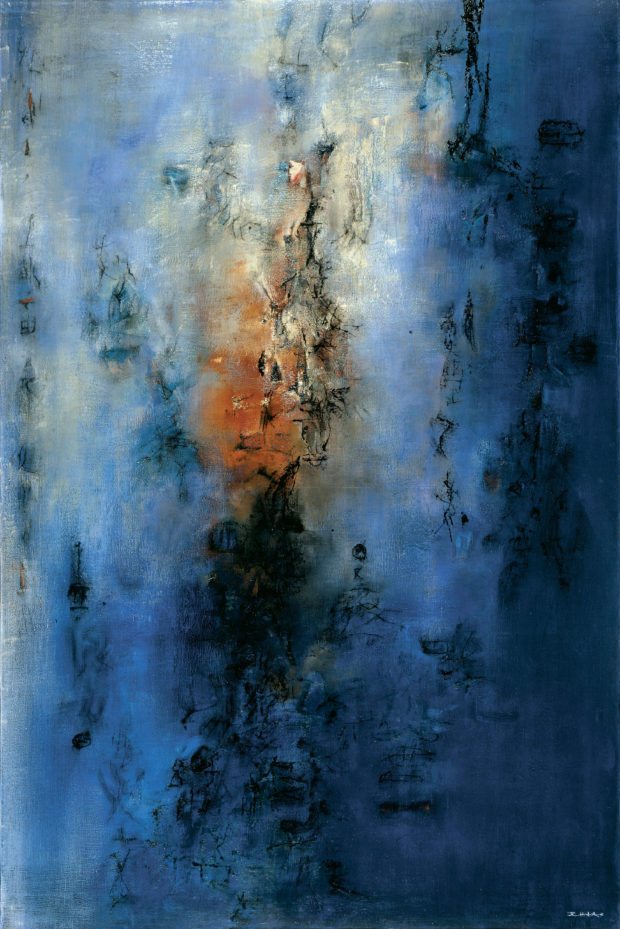
1955
Oil on canvas
76 3⁄4 × 51 1⁄8 in. (195 × 130 cm)
Private collection, Switzerland
©Zao Wou-Ki ProLitteris, Zurich. Photography by Dennis Bouchard
At the entrance of the exhibition floats Zao Wou-ki’s painting Hommage à Chu Yun—05.05.55 (1955), a large canvas cloaked in fluid patches of startlingly limpid aquamarine, rust, and warm cream. The abstract work appears to conceal something underwater. Perhaps it is the ancient Chinese poet of the title, who, after being exiled, drowned himself in the Miluo River. The concentration of reddish color in the center hints at an object, yet the iridescent ripples make it difficult to identify.
No Limits: Zao Wou-ki, currently on view at the Asia Society Museum, is the artist’s first-ever retrospective in the U.S. Zao (1921-2013) is perhaps best known as the Chinese painter who moved to Paris after World War II, where he worked alongside the French Informel painters, while also maintaining a dialogue with the Abstract Expressionists in New York. Zao was not singular in his global career: many post-war painters enthusiastically communicated with an international network of artists and traveled around the world. The exhibition curators Dr. Melissa Walt, Dr. Ankeney Weitz, and Michelle Yun characterize modern abstract painting as defined by this “dynamic cross-cultural circulation of ideas and images.”
